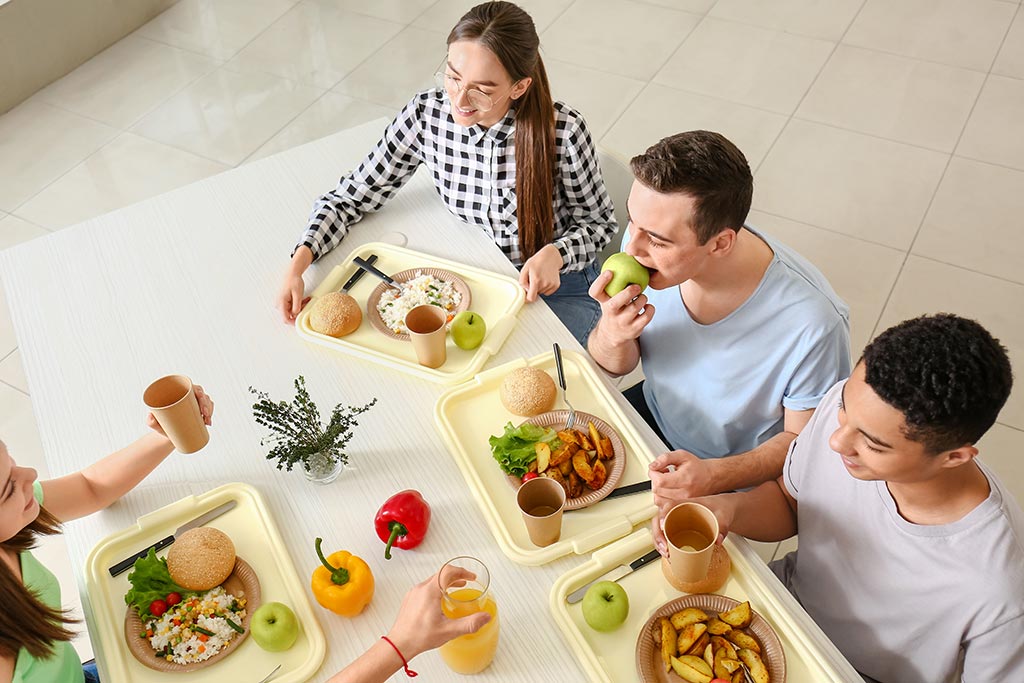Lunch break at school is the time each day when kids grab a bite to eat and relax with friends. School lunch has been around for decades, but has dramatically changed over the past few years.
"They're getting a much better meal than in the past," said Matt Dwyer, Director of Food Services with Guadalupe Union School District.
No longer are students being served greasy pizza and tater tots. Instead, school lunch nutrition is vastly improved.
Each school meal must now offer five featured components of fruits, vegetables, meats, grains, milk.
Each student much take at least three of those components at lunch, two at breakfast.
"Over the course of a week, you have a meat target, then you have your grain target, then you have your fruit and vegetable target and then you have your milk," said Dwyer.
During the week, meals must offer nine to 10 ounces of meat, eight to 10 ounces of grain, half of cup of fruit per day, 3/4 of a cup of vegetables per day and milk.
Food served is cooked fresh and healthy, in main dishes such as roasted turkey, and sides served in salad bars.
"They are very healthy, nutritious and they taste very good," said Francisco Porras, a 5th grade student at Mary Buren Elementary School in Guadalupe.
Besides serving sizes, federal nutrition requirements go even further.
"There are calorie requirements, calorie restrictions, there's also a sodium requirement we have to meet, no trans-fats, sugars have to be a certain amount," said Jeanie Stellar, Food Service Supervisor with Santa Maria-Bonita School District.
To ensure compliance with federal nutrition guidelines, the California State Department of Education audits each school every three years. The week long process includes meal time observation and a thorough review of records.
The guidelines were enacted in 2012 with Healthy, Hunger-Free Kids Act that was championed by First Lady Michelle Obama. The changes were the first significant upgrades to school nutritional standards in 15 years. With those now in place, schools meals are looking and tasting dramatically different.
"What we were serving the students was convenience food, things that were heated in packages and it has a lot of ingredients," said Kathy Bertelsen, Child Nutrition Services Manager with Lompoc Unified School District.
Now, ingredients have been reduced thanks to the practice of "cooking from scratch."
"When you're cooking from scratch, you are using the ingredients you have purchased, so you know what you're putting into the recipe," said Dwyer.
Schools are able to customize recipes, creating dishes that are both delicious and nutritious.
"You can tell that the ingredients that they use are fresh, so it's always nice knowing that you can go to school and eat fresh food," said Lompoc High School student Stephanie Chicas.
Many schools receive menu and meal planning assistance through Nutrikids, a food service software program. In addition, outside help has also come through local philanthropy.
Over the past 8 years, the majority of schools in Santa Barbara County have undergone a school lunch revolution thanks to vast contributions of the Orfalea Foundation.
"The purpose of that was to empower the school districts to do nourishing, cook from scratch food service operations," said Orfalea Foundation director Kathleen de Chadenedes.
Created in 2007, the innovative foundation, which will close at the end of the year, has provided more than $7 million to schools.
"It was a combination of providing that knowledge and equipment and we also had a team of chefs that continued to provide ongoing technical assistance," said de Chadenedes.
Through that assistance, school districts like Lompoc Unified are creating meals that have to potential to change lives.
"We don't want to be part of the obesity problem, we want to be part of the solution and I think when we're serving this kind of healthy food to kids we're causing a change that will be a change in their eating behaviors for life," said Bertelsen - which should be appreciated by the people who especially hope kids stay happy and healthy.
"I think that parents can really feel good that we're doing a good job of taking care of their kids," said de Chadenedes.
Original article by Dave Alley appears on KEYT.
Photo by Pixel Shot / Adobe






